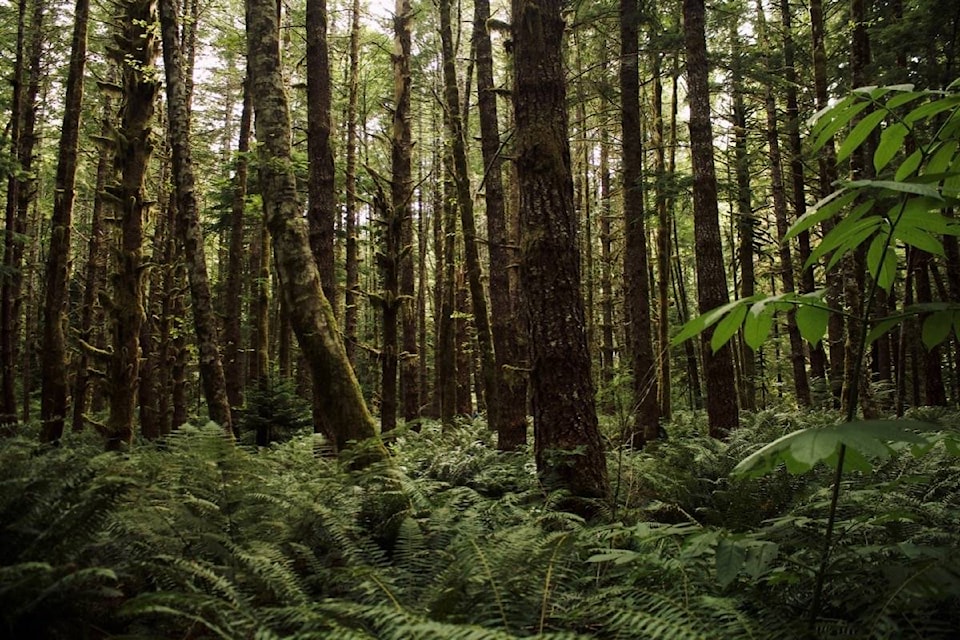By Jeff Bromley and Susan Yurkovich
Across British Columbia, important discussions are happening about the future of our provincial forest sector. As these discussions continue and as the B.C. government advances consultations on the Old Growth Strategic Review and looks to modernize provincial forest policy, the United Steelworkers’ Wood Council and the B.C. Council of Forest Industries – together – believe it’s important to take a balanced approach that is grounded by good science, informed by an inclusive process and creates a path forward that benefits all British Columbians.
We are very proud to work in B.C.’s forest industry – a sector that is foundational to the provincial economy, recognized as a global leader in forest management practices and delivering the low-carbon products the world needs.
As COFI’s Contributing to a Better B.C.: 2019 Forest Industry Economic Impact Study found, it’s an industry that supports 100,000 good jobs for British Columbians and generates $13 billion in GDP and nearly $8.5 billion in wages, salaries, and benefits. Importantly, the forest industry contributes more than $4 billion in government revenue annually to support healthcare, education, and other important social services.
RELATED:
RELATED:
Like all British Columbians, we cherish our forests and value B.C.’s commitment to conservation. B.C. is already a leader in this regard, with about 52 per cent of the land base — which totals 95 million hectares — either protected or under some form of designation. But in addition to conservation values, we also value B.C.’s renewable forest resource, including old growth, for its spiritual and cultural uses, and the jobs and economic opportunities it provides to Indigenous communities, people and families all over the province.
Each year, less than one per cent of the area designated for sustainable timber harvesting by B.C.’s independent chief forester is harvested. About one-quarter of that one per cent is considered old growth, and this modest harvest of mature timber supports 38,000 jobs and contributes $3.5 billion to B.C.’s GDP.
As the provincial government undertakes the work on the review and , it is critically important that we all work to ensure the result is an evidenced-based, province-wide strategy not only for old-growth, but for all of B.C.’s forests.
To achieve this, it’s essential to first define a clear vision for B.C.’s forests. We need to know where we are headed to create a strategy that provides British Columbians a refreshed vision that balances the environmental, social, and economic objectives for our forests.
The next step is creating a province-wide implementation strategy for all forests province-wide, including all Crown forest lands, parks, protected areas, and special management zones, not just the timber harvesting land base. The strategy should be implemented through a plan that prioritizes forest health and sustainability, recognizing the dynamic nature of forests and planning for the effects of climate change.
Getting this right will require input from a wide range of people and organizations. That’s why it it’s critical that First Nations, communities, labour, industry, and others be engaged throughout the process. It’s also essential that decisions about B.C.’s forest resources are grounded in and informed by science, good data, robust socio-economic analysis and incorporate traditional knowledge. This will ensure that government’s objectives are achieved while also minimizing the potential for negative impacts on cultural uses, jobs, families and communities in both urban and rural B.C.
We recognize that there will be differences of opinions about what approach is best, but we believe it’s important that the consultation process brings different parties to the table together to hear each other’s perspectives. Ensuring this vital and informative work is completed prior to any further land use decisions being made will help us get past divisiveness in our communities and move us towards collective solutions.
By working together and balancing the important roles that forests play in our province, we can find a positive path forward that ensures the sector continues to provide benefits for all British Columbians for generations to come.
Jeff Bromley is Chair, Wood Council Canada, United Steelworkers. Susan Yurkovich is President and CEO, B.C. Council of Forest Industries. The Steelworkers’ Wood Council represents over 12,000 forestry workers in B.C. and COFI represents most lumber, pulp and paper, and manufactured wood producers from across the province.



